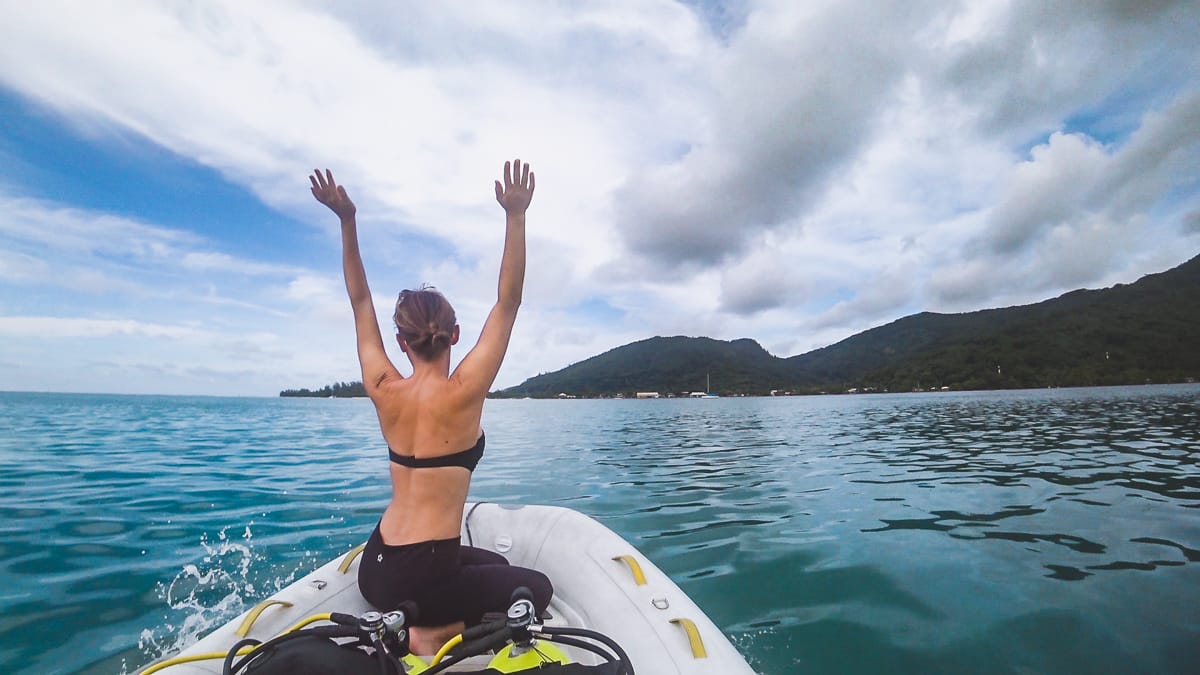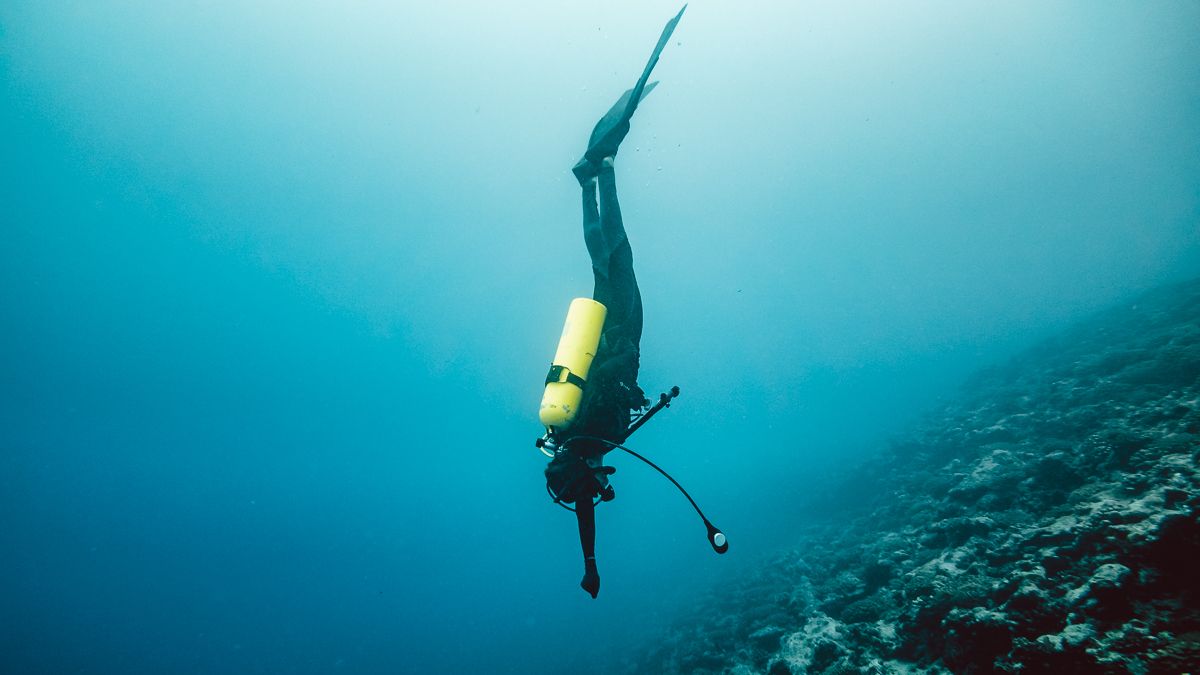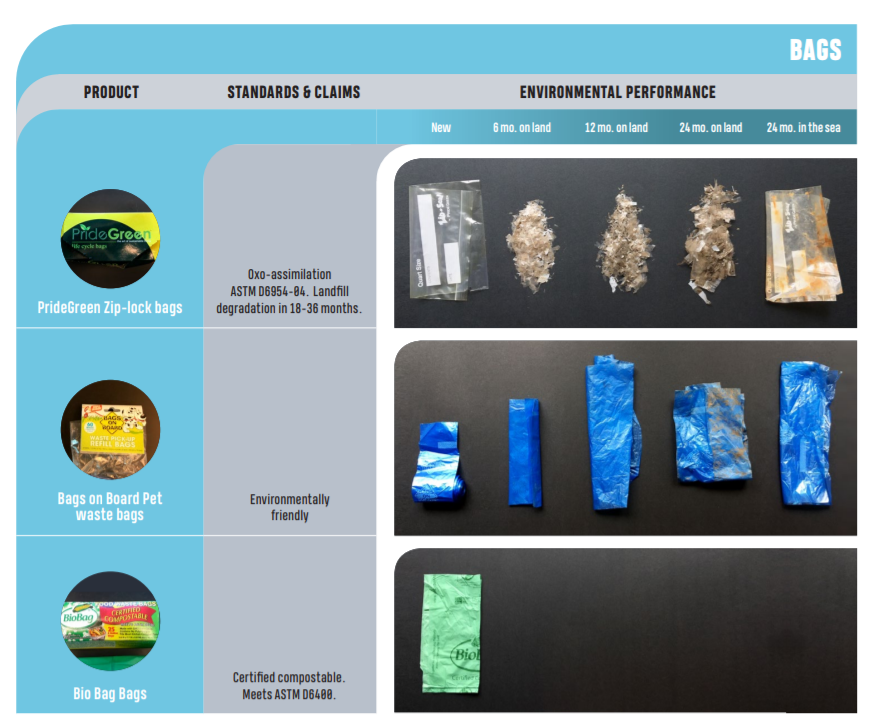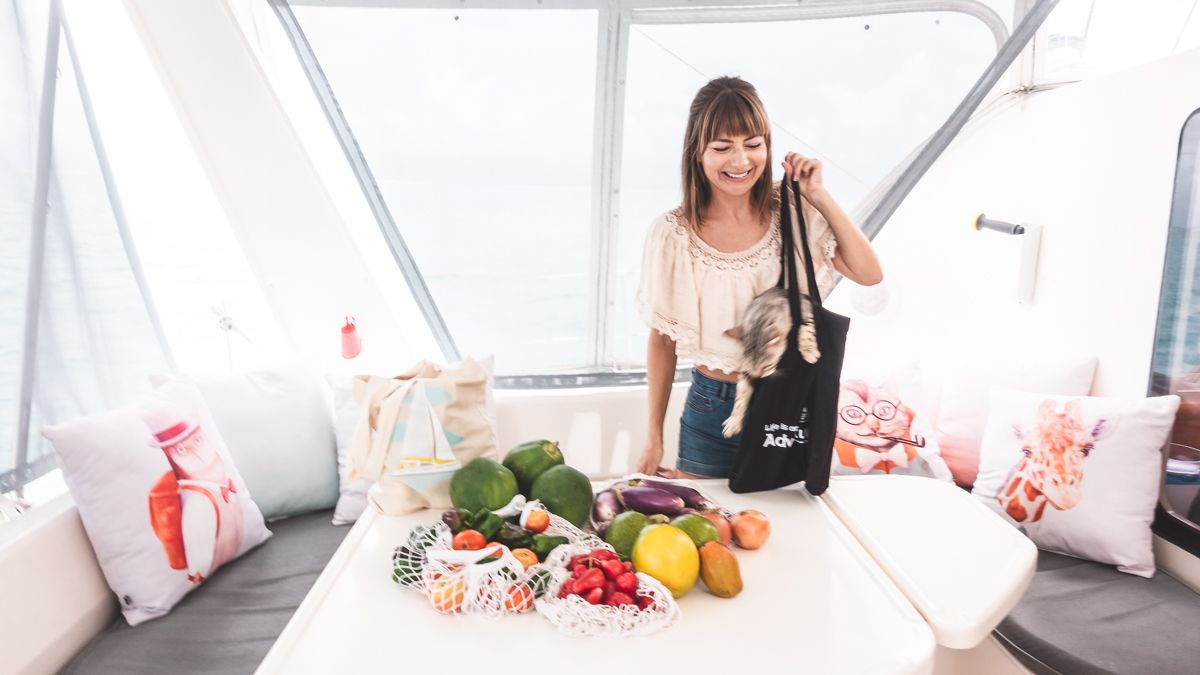Scuba Adventures and Plastic Heartbreak

Rain, rain and more rain. That has been the theme of late with even more being predicted. It’s been coming down in buckets and we’ve been using the gloomy weather as motivation to stay inside and get some editing, writing, organizing and general housekeeping done.
We were deep in the creative zone when all the sudden, the clouds parted, and the sun came out in full glory. It was an invitation to get out while the gettin’ was good. And we’re not ones to turn down an invitation.
With the sun high in the sky, slack tide on the way and the seas relatively calm, there was only one thing to do. Go scuba diving! It’s time to see what lies below the island of Huahine. Spoiler alert, it’s not all marine life.
I wanted to title this one “Scuba Adventures and Turtle Killers”, but Jason said it was too dramatic. I get his point, but it is true. Those plastic floating bags kill hungry unsuspecting turtles (and other creatures too).
We see plastic bags, bottles, candy wrappers, shoes and a wide assortment of rubbish both floating on the surface and way down on the sea floor. It honestly makes so many of those post-apocalyptic, Earth takes revenge, movies like “The Uninhabitable Earth” or “Automata” seem eerily plausible.
But, we’re not there yet! I believe most of us care about our planet and want to do the right thing, it’s just not always clear what that is.
We have been eco-minded for as long as we can remember and try to leave as small of a footprint behind as possible. It’s one of the reasons we’re so passionate about Living Off The Grid.
But it’s not easy. Information can be misleading. Education on sustainability and our climate is weak…and politics often get in the way.
Luckily, we’re incredibly curious people who love to learn! So, in the spirit of learning and sharing, here is what I’ve gathered about biodegradable and compostables.

Biodegradable Plastics, A False Solution
I hate when I think I am doing something good for the environment…only to find out my seemingly greener alternative is possibly worse. That is exactly what happened with me and biodegradable plastics.
We use certified home compostable bags for our composting toilet. And because I know those degrade along with my other waste, I simply assumed biodegradable was similar. NOT the case.
- Biodegradable – capable of being decomposed by bacteria or other living organisms.
- Compostable – capable of disintegrating into natural elements in a compost environment, leaving no toxicity in the soil.
Sounds pretty darn similar right? The big difference…compostable bags are regulated while biodegradable bags are not. Without regulation standards and labeling requirements, the biodegradable bags could still be made from toxic materials. We have no way of knowing exactly what they are made of. Biodegradable and compostable bags are made from a variety of plant-based materials like corn and wheat instead of petroleum (which is what plastic is made of).
Even so, unless specified “certified home compostable” either option still requires very specific conditions to break down. Biodegradable bags need temps to reach 122 degrees Fahrenheit (50 degrees Celsius) and must be exposed to UV light. This does not happen in landfills, compost bins and certainly not in the ocean! Plus, they still look like a jellyfish to a turtle, so they are just as harmful as a traditional plastic bag.
If a biodegradable bag is sent to a landfill, it breaks down very slowly and without oxygen. It then produces and emits methane, a greenhouse gas 23 times more potent than carbon dioxide!?!
Here is a good visual of exactly how some of these biodegradable and compostable options degrade over time. It’s from the 5Gyres Ban 2.0 Report and the whole report is a real eye opener: https://www.5gyres.org/publications

I have spent hours pouring over research articles and the evidence is painfully clear that bioplastics do not solve any of our plastic problems and are potentially worse (insert heavy sigh here).
Reusable #PlasticFree Alternatives
- Gone With The Wynn’s Organic Cotton Tote Bags – gonewiththewynns.teemill.com/collection/byob/
- Insulated Tote Bags: amzn.to/2W1MJch
- Organic Cotton Mesh Produce Bags (3 pack): amzn.to/2GngqxH
- Mesh and Muslin Organic Cotton Drawstring (10 pack): amzn.to/2Ixd3rE

I still need disposable bags. What’s the best option?
As sailors, we tote our rubbish to shore to dispose of it. Often times there are signs on the bins saying, “please make sure all garbage is contained in a bag”. Then there’s the issue of compost and our composting toilet. When we’re at sea, it’s dandy to toss compost overboard. But, when we’re anchored inside a bay, lagoon or anywhere within 3 miles of shore, that’s unacceptable. So, what is our best options for now?
- For composting, our “certified home compostable” bags are still a good choice: https://amzn.to/2IGy2r2
- For trash & recyclables these 80% recycled bags are made from the highest percentage of recycled plastic and they’re still recyclable: https://amzn.to/2Gx1Chi
Awesome Resources
5Gyres is a wealth of information and actionable tips. Which is why we volunteered as #5GyresAmbassadors ! If you’ve never heard of 5Gyres or all this #PlasticFree talk or how our oceans are in peril, I suggest starting with this Better Alternatives Now report. Some of the findings totally blew my mind: 5gyres.org/s/5Gyres_BANlist2.pdf
For some additional reading, I also dig what these organizations are doing:
🙏 THANK YOU!
Sharing our lives and what we learn along the way is possible because of viewers like you. If you like what you see, there are lots of FREE ways you can show your support. Thank you for being a part of the journey.
🎥CAMERA GEAR USED IN THIS VIDEO📷
- All our camera gear: https://www.gonewiththewynns.com/photo-video-gear
🤿FREEDIVING & SCUBA
- All Dive Gear Info & Reviews Here: gonewiththewynns.com/diving-from-sailboat
🎶AWESOME tunes:
- Source: http://bit.ly/artlist-gwtw
- Artists Used In This Video: Giants and Pilgrims / Atomiks / Ian Post




